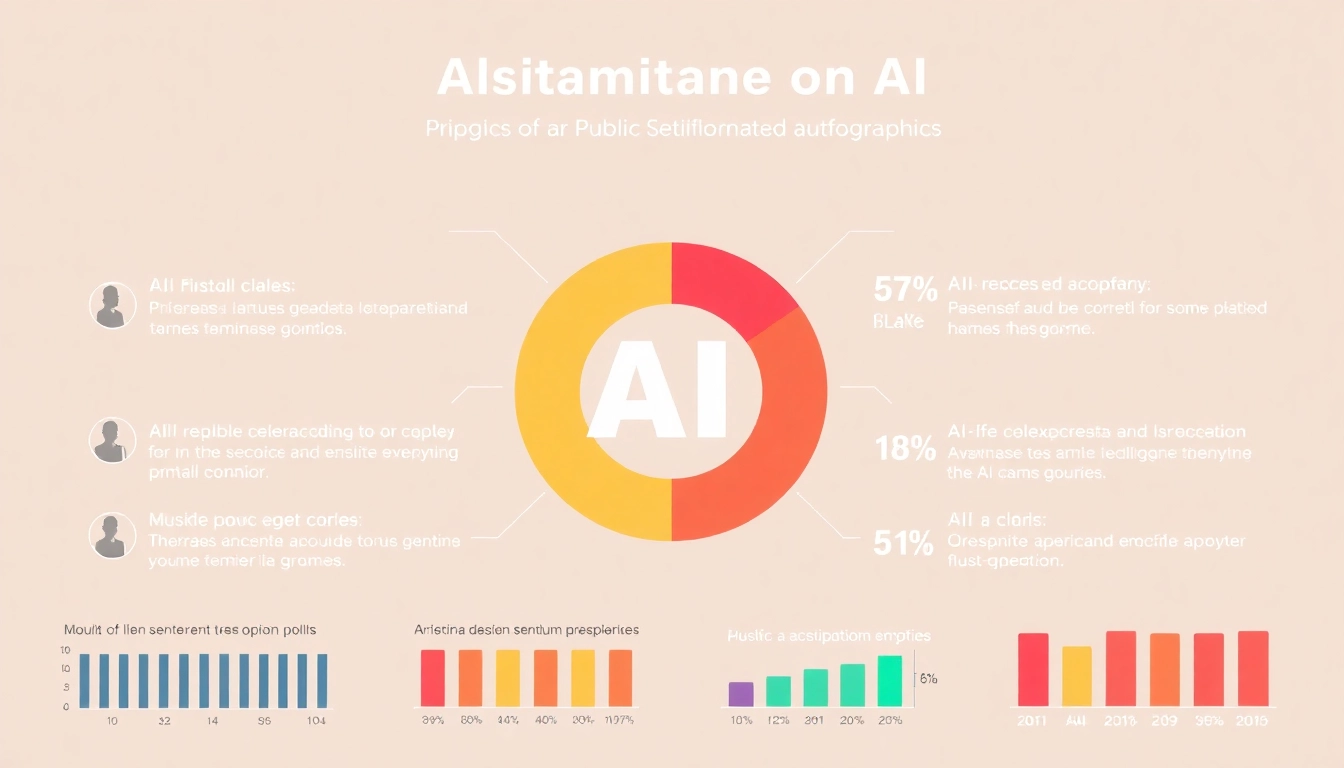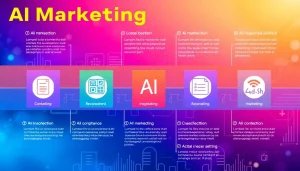1. Introduction to AI Opinion Polls
The rapid development of artificial intelligence (AI) technologies has not only illuminated the capabilities of machines but has also shifted public sentiment towards these innovations. Understanding how people perceive AI is crucial, especially as it becomes more integrated into our daily lives. In this context, AI opinion polls emerge as powerful tools for gauging public sentiment. These polls provide insights into societal perceptions, concerns, and expectations regarding AI technologies.
1.1 The Importance of Public Sentiment
Public sentiment plays a critical role in shaping the trajectory of technological advancements. AI technologies, while revolutionary, also evoke a range of emotions from excitement to apprehension. Surveys and opinion polls serve as a mirror of public opinion, reflecting not only the general attitudes but also specific concerns about privacy, job displacement, and ethical considerations associated with AI.
1.2 Overview of AI Trends
To understand the landscape of AI opinion, we need to examine current trends. Research from organizations like Pew Research indicates a growing skepticism about AI’s impact on jobs and society at large. For instance, a recent poll found that 52% of Americans expressed more concern than excitement regarding AI in daily life. These trends highlight the duality of public opinion, wherein individuals recognize AI’s potential benefits while also fearing its implications.
1.3 Objectives of the Article
This article aims to explore the current landscape of AI opinion polls, detailing public attitudes towards AI, its implications on various spheres, and how organizations can leverage these insights to form more effective strategies. By placing these insights within the broader context of technological change, we aim to provide a comprehensive understanding that can assist stakeholders—from developers to policymakers—in navigating the complexities of AI integration.
2. Current Public Attitudes Towards AI
2.1 Key Findings from Recent Polls
Recent polls have unveiled a mix of skepticism and cautious optimism about AI technologies. For example, a notable survey by Gallup revealed that a majority of U.S. adults believe AI poses more risks than benefits, particularly concerning employment and privacy. 72% of respondents have expressed concern that AI could facilitate the spread of misinformation, underscoring a critical area where public fear intersects with real-world implications.
2.2 Gender and Age Disparities in Opinions
Analysis of AI opinions by demographic factors reveals significant disparities based on gender and age. Women tend to show more apprehension towards AI than men, with many citing safety and ethical issues as primary concerns. Similarly, younger people often view AI more favorably compared to older generations who may have lived through technological upheaval in their careers. Understanding these dynamics is essential as they can influence marketing, product development, and societal acceptance of AI technologies.
2.3 Geographical Variations in Sentiment
AI opinions also vary significantly across geographical boundaries. In urban areas, where technology use is often higher, individuals may express more familiarity and comfort with AI tools. In contrast, those in rural areas might exhibit greater skepticism, fearing isolation from AI developments or job losses in traditional industries. Recognizing these geographical differences can inform targeted educational and outreach efforts regarding AI technologies.
3. Implications of AI Opinion Poll Results
3.1 Understanding Public Concerns and Hopes
The results of AI opinion polls serve as a vital resource for understanding the hopes and fears that individuals harbor regarding these technologies. While many express excitement over AI’s potential to enhance productivity and improve quality of life, substantial doubt exists surrounding issues of privacy, bias, and the potential for job displacement. Organizations must address these concerns transparently to build trust and foster acceptance.
3.2 Influence of AI on Job Market Views
A significant segment of the population perceives AI as a threat to job security. Polls indicate that a large number of people believe that AI will displace jobs and reduce employment opportunities. This sentiment is exacerbated by ongoing discussions about automation and its impact on industries such as manufacturing and services. By adopting a proactive approach that includes workforce retraining programs, businesses can mitigate these concerns and demonstrate their commitment to social responsibility.
3.3 Relationship Between AI Usage and Sentiment
Interestingly, individuals’ personal experiences with AI often shape their opinions. Those who regularly interact with AI-driven products—be it in the form of virtual assistants, chatbots, or recommendation engines—may express more positive sentiments. Incorporating user feedback in the development process can lead to more user-friendly AI systems that align better with human expectations, thereby improving overall public sentiment.
4. How Organizations Can Leverage Poll Data
4.1 Tailoring Products and Services Based on Feedback
Organizations can significantly benefit from analyzing AI opinion poll data to tailor their offerings. By identifying specific concerns or desires expressed in polls, companies can adjust their product features, marketing strategies, and customer support protocols. For instance, if polls indicate widespread concern about data privacy, companies can enhance their privacy policies and transparently communicate these improvements to gain consumer trust.
4.2 Enhancing Communication Strategies
Effective communication about AI features and functionalities is essential to alleviate fears and build user confidence. Organizations can utilize data from polls to craft messaging that addresses public concerns head-on, thereby positioning themselves as thought leaders in the ethical deployment of AI. This might include creating educational content that demystifies AI technologies and offers insights into their benefits and limitations.
4.3 Building Trust Through Transparency
Transparency is key in fostering trust between organizations and their stakeholders. Poll results often highlight the need for improved communication regarding AI’s role and performance. By openly sharing how AI algorithms work, the data they utilize, and the controls available to users, organizations can create a sense of accountability that resonates with the public. This transparency can mitigate fear and stimulate positive sentiment towards AI technologies.
5. Future Directions for AI Opinion Research
5.1 Emerging Trends to Watch
The landscape of AI opinion is continuously evolving, with new trends emerging that could reshape public perception. As AI becomes integrated into more aspects of daily life, including healthcare and personal finance, real-time polling techniques may gain traction, allowing organizations to capture sentiment fluctuations instantaneously. Observing how public sentiment changes in response to new AI releases will be vital for developers and marketers alike.
5.2 The Role of Ethics in AI Discussions
As concerns about ethical AI remain paramount, incorporating discussions on ethics within opinion polling will be crucial moving forward. Organizations must engage the public in conversations about fairness, bias, and accountability in AI systems to build confidence and align their operations with societal values. Polls that probe these ethical dimensions can yield valuable insights that enhance responsible AI development.
5.3 Future Polling Methodologies and Technologies
The methodologies used for polling public opinion on AI are likely to evolve, leveraging advancements in technology. Social media platforms, mobile applications, and online communities may serve as valuable data sources for real-time sentiment analysis. Utilizing AI itself in the polling process could improve data collection and analysis, leading to more nuanced insights. Innovations in polling technologies will help capture a more accurate reflection of public sentiment as attitudes toward AI continue to develop.








